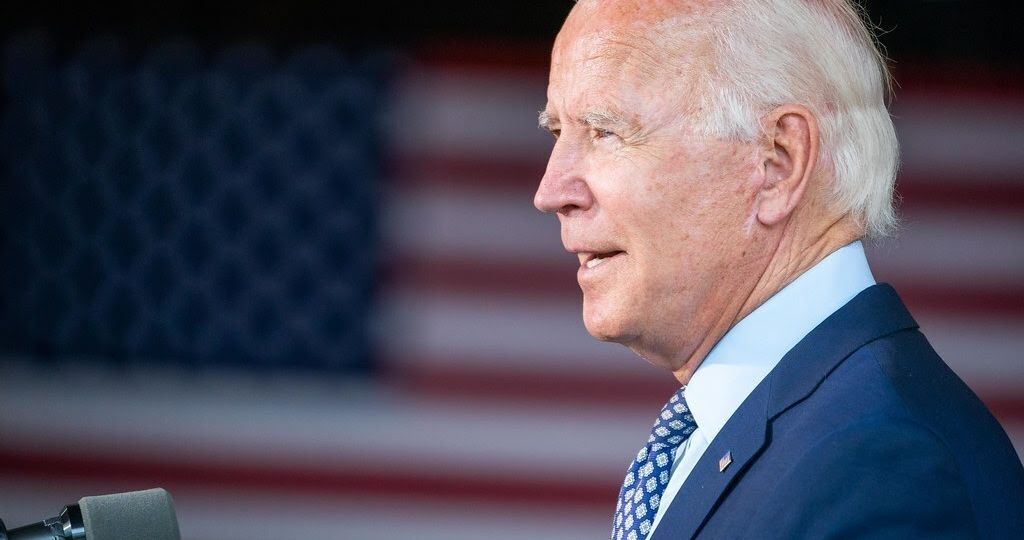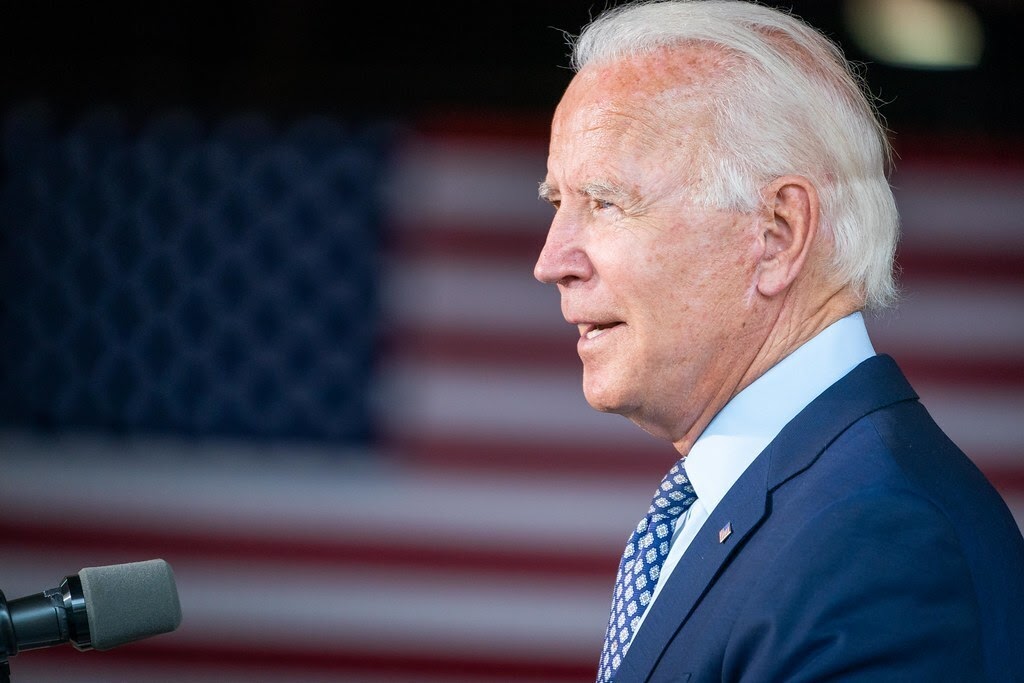
News Analysis: President Biden’s infrastructure plan encourages a transition to clean energy
As President Biden settles into the White House, the administration seeks to unify the executive branch, Congress and industry members to
pursue net-zero emission goals, framing the issue as a direct competition with China.
By Connor C. Muelken, staff writer
WASHINGTON — Over the course of the 2020 presidential election, the Biden administration framed environmental policy goals as a national security issue. Emphasizing not only the looming threats of intensifying natural disasters, but in the context of China’s rise as a global superpower, as the race to become tomorrow’s clean energy leader intensifies.
Within just hours of the inauguration on Jan. 20, 2021, the resident signed several executive orders to aid in the curbing of carbon admissions within the U.S. and refocus administrative agencies on environmental issues.
Biden’s Initial Executive Orders
The executive orders signed by the president include the ‘Executive Order on Protecting Public Health Environment and Restoring Science to Tackle the Climate Crisis at Home and Abroad,’ which instructs administrative agencies to focus on climate related issues and, specifically, revoked the permit for the Keystone XL Pipeline, which symbolized, for many, the U.S.’s dependence on oil, according to a statement from the White House. As promised on the campaign trail, Biden signed an executive order to restore the U.S.as a member of the Paris Climate Agreement, the exiting of which was a key component of the Trump administration’s environmental policy.
These executive orders have allowed the federal government to recalibrate its focus on reaching net-zero carbon emissions by 2050.

The Biden administration has quickly focused on creating a friendlier supervising environment for ailing regulatory agencies, such as the EPA, which battled the Trump administration over the course of its tenure.
Dr. Steven Vanderheiden, a professor at the University of Colorado Boulder who specializes in environmental politics and normative political theory and has published several works, such as “The Politics of Energy: Challenges for a Sustainable Future” and “Atmospheric Justice: A Political Theory of Climate Change,” believes the new administration will usher a return to normalcy within the EPA.
Dr. Vanderheiden explained the change in administration may create a top-down transformation within the EPA’s culture, as employees of the EPA no longer face bombardment from a hostile administration. According to Dr. Vanderheiden, employees of the EPA felt discouraged to work, and some left due to the conflicts between the agency and the Trump administration. Fortunately, the change in administration will likely allow the EPA to return to the status quo of enforcing environmental policies, but he noted it will take time to fully recover.
The Biden administration will differ from its predecessor, emphasizing the reliance on credential science, Dr. Vanderheiden explained. On Jan. 27, President Biden issued an executive order called the “Memorandum on Restoring Trust in Government Through Scientific Integrity and Evidence-Based Policymaking”, which highlights the administration’s emphasis on peer reviewed science. Specifically, the order states “[i]t is the policy of my Administration to make evidence-based decisions guided by best available science and data…[s]cientific findings should never be distorted or influenced by political considerations.”
Although these executive orders are a step in the right direction for future environmental policies, Dr. Vanderheiden explained that policies implemented through executive action can be fragile, as they may depend on who sits in the White House. However, he emphasized executive orders have the potential to create lasting impact in policymaking. Now, the administration looks to secure the future of green energy within America, through legislation.
Environmental Policy in the American Jobs Plan
Biden’s first legislative proposal, regarding environmental policy, was announced on March 31, as the administration proposed “The American Jobs Plan,” priced at $2 trillion to be invested in the nation over the next decade . “[T]he President’s plan will unify and mobilize the country to meet the great challenges of our time: the climate crisis and the ambitions of an autocratic China,” the White House wrote in a statement.
President Biden has continued to frame the issue, and his proposal, as a direct counter to China. After the President met with a bipartisan group of lawmakers, on Monday, April 12, the White House released a statement, “[t]he President and Vice President shared their vision in the American Jobs Plan to create millions of good jobs, rebuild our country’s infrastructure, and position the United States to out-compete China.” Again, the administration is purposeful in framing the issue in the context of national security, directly challenging China.
Although the infrastructure bill consists of a plethora of policy issues regarding infrastructure, one section of the bill specifies how Congress should encourage green energy infrastructure. Specifically, Biden proposes an investment of $174 billion, which includes providing consumers with access to tax rebates as incentives to buy American-made EVs, establishing grant programs for state and local governments and the private sector to build 500,000 EV chargers by 2030, electrify 20% of school buses and electrify the federal fleet.
Green Energy Infrastructure and Automakers
The expansion of green energy infrastructure, such as electric vehicle charging stations will be crucial for the Biden administration as they look to a goal of net-zero emissions by 2050. “I think it [U.S. infrastructure] would have some ability to charge consumer vehicles,” Dr. Vanderheiden stated. However, he remains skeptical about the extent to which it could be effective, “If we were to dramatically expand demand for charging stations, it would be overwhelmed.”
Range anxiety is the biggest worry for consumers, Dr. Vanderheiden explained. Industries, such as the automotive industry, understand these worries affect consumers. Hence, they see this as an opportunity to aid in the consumer’s transition to zero emission vehicles.
In late March, the Alliance for Automotive Innovation, which represents most auto manufacturers in the U.S., wrote a letter to the Biden administration emphasizing the need for consumer incentives, expanded charging infrastructure and security for innovations and supply chains, in order to make a transition to zero emission vehicles more seamless.
Of course, many may recall the GM Super Bowl commercial, featuring Will Ferrell, in which GM announced its fleet would be fully electrified by 2035. As delightful as Will Ferrell mobilizing the American public at the expense of Norway may be, many remain skeptical about the industry’s posturing.
“Just two years ago, the industry was trying to overturn California’s emission rules,” Dr. Vanderheiden emphasized. “The industry is certainly subject to bellwether,” Dr. Vanderheiden continued. One should keep context in perspective, “Their main interest is to continue to manufacture cars that people will buy.”
In Nov. 2020, GM withdrew its complaint against the state of California, announcing in a letter from CEO, Mary Barra, “To better foster the necessary dialogue, we are immediately withdrawing from preemption litigation and inviting other automakers to join us,” she wrote. The industry is seeking favor with the Biden administration to capitalize on future policies.
“It is good to see, it is not binding in any way,” Dr. Vanderheiden stated, responding to GM’s announcement of their fleet being fully electric by 2035. “Pledges are important, and people will be paying attention to their research and development.” The important question becomes: “are they really investing in the technology?”
Colorado’s Green Infrastructure
Although the U.S. government formally withdrew from the Paris Climate Agreement in 2018, many states, such as Colorado continued to implement climate friendly infrastructure policies of their own.
According to the U.S. Energy Information Agency, “Since 2010, Colorado’s renewables electricity net generation has more than tripled, led by increased wind and solar, and accounted for 30% of the state’s total generation in 2020.” Within the United States, “Colorado ranked seventh among the states in installed wind power capacity in 2020.”
The efforts of states, individually, to promote reducing emissions has bought time for the Biden administration to implement policies geared towards reaching net zero emissions by 2050, such as promoting clean energy production. “In terms of reaching net zero, we are at a point where solar and wind are economically viable,” Dr. Vanderheiden explained.
To encourage further adoption of clean energy sources, Congress may seek to reduce subsidies fossil fuel companies receive. It is estimated the U.S. distributes $20 billion in subsidies to the fossil fuel industry every year, slowing the transition of energy providers.
Delivering on Net-Zero Emissions
Looking forward, The Biden administration has a unique opportunity, with a slight majority in both the House and the Senate, to create bipartisan support for the “American Jobs Plan” and other environmental policies by framing the environmental issue as a national security issue, which is a direct counter to China’s advances in the future of energy. Crucially, the Biden administration must look to other policies, which may be less flashy than a new Tesla, such as overhauling the federal fleet and encouraging the energy industry to adopt cleaner energy sources. In order to deliver on his campaign promise to “ensure the U.S. achieves a 100% clean energy economy and reaches net-zero emissions no later than 2050,” the Biden administration will have to move heaven and earth… to save heaven and earth.

